
The IBM 650 Magnetic Drum Data-Processing Machine is an early digital computer produced by IBM in the mid-1950s. It was the first mass-produced computer in the world. Almost 2,000 systems were produced, the last in 1962, and it was the first computer to make a meaningful profit. The first one was installed in late 1954 and it was the most-popular computer of the 1950s.

The IBM 700/7000 series is a series of large-scale (mainframe) computer systems that were made by IBM through the 1950s and early 1960s. The series includes several different, incompatible processor architectures. The 700s use vacuum-tube logic and were made obsolete by the introduction of the transistorized 7000s. The 7000s, in turn, were eventually replaced with System/360, which was announced in 1964. However the 360/65, the first 360 powerful enough to replace 7000s, did not become available until November 1965. Early problems with OS/360 and the high cost of converting software kept many 7000s in service for years afterward.

The Manchester Baby, also called the Small-Scale Experimental Machine (SSEM), was the first electronic stored-program computer. It was built at the University of Manchester by Frederic C. Williams, Tom Kilburn, and Geoff Tootill, and ran its first program on 21 June 1948.
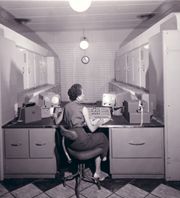
The Ferranti Mark 1, also known as the Manchester Electronic Computer in its sales literature, and thus sometimes called the Manchester Ferranti, was produced by British electrical engineering firm Ferranti Ltd. It was the world's first commercially available electronic general-purpose stored program digital computer.

Tom Kilburn was an English mathematician and computer scientist. Over his 30-year career, he was involved in the development of five computers of great historical significance. With Freddie Williams he worked on the Williams–Kilburn tube and the world's first electronic stored-program computer, the Manchester Baby, while working at the University of Manchester. His work propelled Manchester and Britain into the forefront of the emerging field of computer science.

The IBM 305 RAMAC was the first commercial computer that used a moving-head hard disk drive for secondary storage. The system was publicly announced on September 14, 1956, with test units already installed at the U.S. Navy and at private corporations. RAMAC stood for "Random Access Method of Accounting and Control", as its design was motivated by the need for real-time accounting in business.
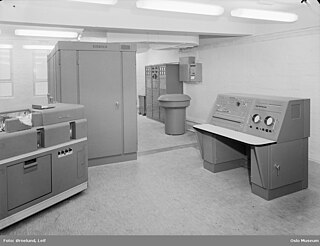
The DEUCE was one of the earliest British commercially available computers, built by English Electric from 1955. It was the production version of the Pilot ACE, itself a cut-down version of Alan Turing's ACE.

The Z22 was the seventh computer model Konrad Zuse developed. One of the early commercial computers, the Z22's design was finished about 1955. The major version jump from Z11 to Z22 was due to the use of vacuum tubes, as opposed to the electromechanical systems used in earlier models. The first machines built were shipped to Berlin and Aachen.

The LGP-30, standing for Librascope General Purpose and then Librascope General Precision, is an early off-the-shelf computer. It was manufactured by the Librascope company of Glendale, California, and sold and serviced by the Royal Precision Electronic Computer Company, a joint venture with the Royal McBee division of the Royal Typewriter Company. The LGP-30 was first manufactured in 1956, at a retail price of $47,000, equivalent to $530,000 in 2023.
The Mercury was an early commercial computer from the mid-1950s built by Ferranti. It was the successor to the Ferranti Mark 1, adding a floating point unit for improved performance, and increased reliability by replacing the Williams tube memory with core memory and using more solid-state components. The computer had roughly 2000 vacuum tubes and 2000 germanium diodes. Nineteen Mercuries were sold before Ferranti moved on to newer designs.
The DRTE Computer was a transistorized computer built at the Defence Research Telecommunications Establishment (DRTE), part of the Canadian Defence Research Board. It was one of the earlier fully transistorized machines, running in prototype form in 1957, and fully developed form in 1960. Although the performance was quite good, equal to that of contemporary machines like the PDP-1, no commercial vendors ever took up the design, and the only potential sale to the Canadian Navy's Pacific Naval Laboratories, fell through. The machine is currently part of the Canadian national science and technology collection housed at the Canada Science and Technology Museum.
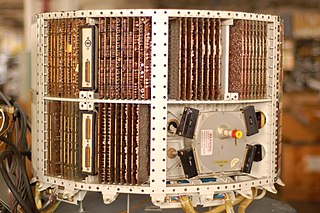
The D-17B (D17B) computer was used in the Minuteman I NS-1OQ missile guidance system. The complete guidance system contained a D-17B computer, the associated stable platform, and power supplies.

A transistor computer, now often called a second-generation computer, is a computer which uses discrete transistors instead of vacuum tubes. The first generation of electronic computers used vacuum tubes, which generated large amounts of heat, were bulky and unreliable. A second-generation computer, through the late 1950s and 1960s featured circuit boards filled with individual transistors and magnetic-core memory. These machines remained the mainstream design into the late 1960s, when integrated circuits started appearing and led to the third-generation computer.
Richard Lawrence Grimsdale was a British electrical engineer and computer pioneer who helped to design the world's first transistorised computer.

The Manchester computers were an innovative series of stored-program electronic computers developed during the 30-year period between 1947 and 1977 by a small team at the University of Manchester, under the leadership of Tom Kilburn. They included the world's first stored-program computer, the world's first transistorised computer, and what was the world's fastest computer at the time of its inauguration in 1962.

The Manchester Mark 1 was one of the earliest stored-program computers, developed at the Victoria University of Manchester, England from the Manchester Baby. Work began in August 1948, and the first version was operational by April 1949; a program written to search for Mersenne primes ran error-free for nine hours on the night of 16/17 June 1949.
A diode matrix is a two-dimensional grid of wires: each "intersection" wherein one-row crosses over another has either a diode connecting them, or the wires are isolated from each other.
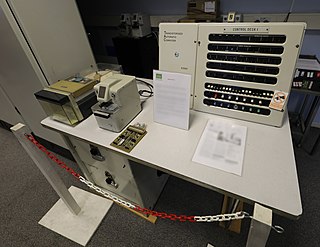
The Marconi Transistorized Automatic Computer was the first all-transistor computer built by Britain's Marconi Company. It was designed and manufactured from around 1959.
Philco was one of the pioneers of transistorized computers. After the company developed the surface barrier transistor, which was much faster than previous point-contact types, it was awarded contracts for military and government computers. Commercialized derivatives of some of these designs became successful business and scientific computers. The TRANSAC Model S-1000 was released as a scientific computer. The TRANSAC S-2000 mainframe computer system was first produced in 1958, and a family of compatible machines, with increasing performance, was released over the next several years.
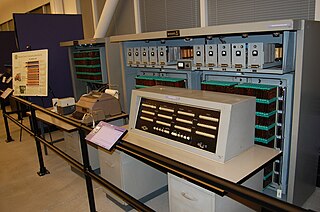
The Zuse Z23 was a transistorized computer first delivered in 1961, designed by the Zuse KG company. A total of 98 units were sold to commercial and academic customers up until 1967. It had a 40-bit word length and used an 8192 word drum memory as main storage, with 256 words of rapid-access ferrite memory. It operated on fixed and floating-point binary numbers. Fixed-point addition took 0.3 milliseconds, a fixed point multiplication took 10.3 milliseconds. It was similar in internal design to the earlier vacuum tube Z22. Related variants were the Z25 and Z26 models.














